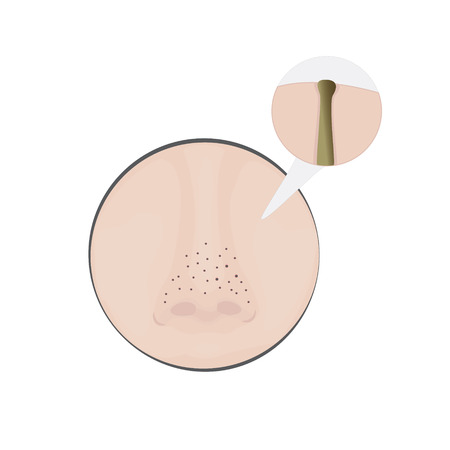1. Understanding Neuromodulators
When it comes to reducing wrinkles and achieving a smoother, more youthful appearance, neuromodulators are a popular choice. Botox, Dysport, and Xeomin are three of the most well-known options in the aesthetics industry. While they all serve the same general purpose—relaxing facial muscles to minimize the appearance of fine lines and wrinkles—there are some key differences between them.
How Neuromodulators Work
Neuromodulators are injectable treatments that use botulinum toxin type A to temporarily block nerve signals to specific muscles. By doing so, they prevent muscle contractions that cause dynamic wrinkles, such as crow’s feet, forehead lines, and frown lines. Over time, this results in a softer and more refreshed appearance.
Common Uses in Aesthetics
These treatments are widely used for both cosmetic and medical purposes. In aesthetics, they help reduce:
- Forehead lines – Horizontal wrinkles that develop due to repeated expressions.
- Frown lines (11 lines) – Vertical creases between the eyebrows.
- Crow’s feet – Fine lines around the outer corners of the eyes.
- Bunny lines – Wrinkles on the sides of the nose.
- Lip lines – Fine lines around the mouth area.
Comparison of Botox, Dysport, and Xeomin
Although Botox, Dysport, and Xeomin work similarly, they have unique characteristics that may make one a better option depending on individual needs. Here’s a quick comparison:
| Neuromodulator | Main Ingredient | Dilution & Spread | Onset Time | Aesthetic Use Cases |
|---|---|---|---|---|
| Botox | Botulinum toxin type A with protective proteins | Tighter spread; precise targeting | Around 3-5 days | Smooths fine lines and wrinkles; commonly used for forehead and frown lines |
| Dysport | Botulinum toxin type A with different protein formulation | Tends to spread more easily | Around 2-3 days (faster onset) | Ideal for larger treatment areas like forehead lines due to wider diffusion |
| Xeomin | Pure botulinum toxin type A (no accessory proteins) | No additives; may reduce resistance risk over time | Around 3-4 days | An alternative for those who may develop resistance to Botox or Dysport; effective for frown lines and forehead wrinkles |
The Right Choice for You
The best neuromodulator for you depends on your aesthetic goals, how quickly you want to see results, and how your body responds to treatment. A consultation with an experienced provider can help determine which option will give you the best outcome based on your skin type, muscle movement patterns, and desired look.
2. Key Differences Between Botox, Dysport, and Xeomin
When choosing between Botox, Dysport, and Xeomin, its important to understand their key differences. Each neuromodulator has unique characteristics that can affect how it works for you. Below is a detailed comparison of formulation, diffusion, onset time, and longevity to help you determine which option might be best for your needs.
Formulation
While all three products contain botulinum toxin type A, they have different formulations:
| Neuromodulator | Formulation |
|---|---|
| Botox | Contains botulinum toxin type A with protective proteins |
| Dysport | Slightly different protein structure, allowing for faster spread |
| Xeomin | A “naked” form of botulinum toxin without accessory proteins |
Diffusion
The way each product spreads after injection can impact results:
- Botox: More localized diffusion, making it ideal for precise areas.
- Dysport: Spreads more easily, which may be beneficial for treating larger areas.
- Xeomin: Similar diffusion properties to Botox but without additional proteins.
Onset Time
If youre looking for quick results, Dysport generally works the fastest:
| Neuromodulator | Aproximate Onset Time |
|---|---|
| Botox | 3-7 days |
| Dysport | 2-5 days |
| Xeomin | 3-7 days |
Longevity of Results
The duration of effectiveness varies slightly among the three options:
- Botox: Typically lasts 3-4 months.
- Dysport: Lasts around 3-4 months but may fade slightly faster in some individuals.
- Xeomin: Similar longevity to Botox, around 3-4 months.
Selecting the Best Option for You
Your choice between Botox, Dysport, and Xeomin depends on your specific aesthetic goals, how quickly you want to see results, and whether you have any sensitivities to added proteins. Consulting with an experienced provider can help determine which neuromodulator aligns best with your needs.

3. Who Should Choose Botox, Dysport, or Xeomin?
Choosing the right neuromodulator depends on your skin type, treatment goals, and personal preferences. Each product has unique properties that may make one a better fit for you than the others.
✔ Best Option Based on Your Treatment Goals
| Treatment Goal | Best Neuromodulator | Why? |
|---|---|---|
| Smoothing forehead lines | Botox or Dysport | Both work well for reducing horizontal forehead wrinkles. |
| Treating frown lines (11s) | Botox or Xeomin | Xeomin is great for those wanting a preservative-free option. |
| Softening crow’s feet | Dysport | Dysport spreads more easily, making it effective for fine lines around the eyes. |
| Avoiding resistance to treatment | Xeomin | No added proteins mean less risk of developing resistance over time. |
| A quicker onset of results | Dysport | Dysport often starts working faster than Botox or Xeomin. |
✔ Best Choice Based on Skin Type and Sensitivity
- Sensitive Skin: Xeomin is a good option because it contains no additives, reducing the risk of allergic reactions.
- Mature Skin: Botox may be ideal for deeper wrinkles due to its well-documented effectiveness.
- Younger Skin: Dysport works well for early signs of aging and offers a natural-looking effect with its wider spread.
✔ Personal Preferences Matter Too!
Your lifestyle and aesthetic goals can also influence which neuromodulator is best for you:
- If you want predictable, tried-and-true results: Botox is the gold standard with decades of research behind it.
- If you need fast results before an event: Dysport tends to work slightly faster than Botox or Xeomin.
- If you prefer a cleaner formula without extra proteins: Xeomin is the purest form available.
No matter which option you choose, consulting with a qualified injector will help ensure you get the best results based on your unique needs!
4. Potential Side Effects and Considerations
Before deciding on Botox, Dysport, or Xeomin, it’s important to understand the potential side effects and key factors to consider. While these neuromodulators are generally safe when administered by a qualified provider, there are still risks involved.
Common Side Effects
Most patients experience mild and temporary side effects after treatment. These usually resolve within a few days. Here’s a comparison of the most common side effects:
| Side Effect | Botox | Dysport | Xeomin |
|---|---|---|---|
| Pain or redness at injection site | ✔️ | ✔️ | ✔️ |
| Mild swelling or bruising | ✔️ | ✔️ | ✔️ |
| Headache | ✔️ | ✔️ | ✔️ |
| Eyelid or eyebrow drooping (temporary) | ✔️ (rare) | ✔️ (rare) | ✔️ (rare) |
| Allergic reaction (very rare) | ✔️ | ✔️ | ✔️ |
Less Common But Serious Risks
Though uncommon, some individuals may experience more serious side effects, such as:
- Difficulties with swallowing or breathing (extremely rare but possible if the toxin spreads beyond the intended area).
- Migraines or flu-like symptoms.
- An uneven or “frozen” look if too much product is injected.
- An allergic reaction, which may include itching, rash, or dizziness.
Key Considerations Before Treatment
Your Medical History Matters
If you have any neurological disorders, muscle conditions, or a history of severe allergic reactions, consult with your provider before receiving treatment.
Treatment Longevity and Maintenance
The effects of Botox, Dysport, and Xeomin typically last between 3 to 5 months. Regular maintenance treatments are necessary to maintain results.
The Importance of Choosing a Skilled Provider
The risk of complications is significantly lower when an experienced injector administers the treatment. Always seek a licensed and reputable provider.
Lifestyle Factors That Can Affect Results
Certain habits like smoking, excessive sun exposure, and frequent facial expressions can impact how long your results last. A healthy lifestyle may help prolong the effects of your neuromodulator treatment.
If you’re unsure about which option is best for you, discuss your concerns with a professional who can tailor recommendations based on your goals and medical history.
5. Making the Right Choice with Your Provider
Choosing between Botox, Dysport, and Xeomin isn’t just about the product itself—it’s also about finding a skilled and experienced injector who understands your aesthetic goals. A qualified provider can assess your facial anatomy, recommend the best neuromodulator for your needs, and ensure natural-looking results.
Tips for Consulting with a Qualified Injector
- Look for Credentials: Ensure your provider is a board-certified dermatologist, plastic surgeon, or licensed medical professional with extensive experience in injectables.
- Review Before-and-After Photos: Ask to see real patient results to evaluate their expertise.
- Check Patient Reviews: Read online reviews or ask for patient testimonials to gauge satisfaction levels.
- Avoid Bargain Deals: Extremely low prices may indicate diluted products or inexperienced injectors.
- Schedule a Consultation: Meet with your provider before treatment to discuss concerns and expectations.
Questions to Ask Your Injector
During your consultation, asking the right questions can help you feel confident in your choice. Here are some key questions to consider:
| Question | Why It Matters |
|---|---|
| Which neuromodulator do you recommend for my concerns? | Your provider should be able to explain why Botox, Dysport, or Xeomin is best suited for you. |
| How much experience do you have with injectables? | An experienced injector will have performed numerous treatments and can provide better results. |
| What are the potential side effects? | Understanding risks helps set realistic expectations for recovery and outcomes. |
| How long will my results last? | The duration of effects varies between Botox, Dysport, and Xeomin, and knowing this helps with planning future treatments. |
| What aftercare steps should I follow? | Proper aftercare ensures the best possible outcome and minimizes complications. |
The Importance of Personalization
No two faces are alike, which is why a one-size-fits-all approach doesn’t work for neuromodulators. A great injector tailors their technique based on factors like muscle strength, facial structure, and aesthetic preferences. Be open about your goals so they can customize a treatment plan that enhances your natural beauty.
Red Flags to Watch Out For
- Lack of Medical Background: If an injector doesn’t have formal training in aesthetics or medicine, look elsewhere.
- No Consultation Offered: A reputable provider should always offer a thorough consultation before injecting.
- Poor Communication: If they dismiss your concerns or pressure you into unnecessary treatments, reconsider your choice.
- No Clear Pricing: Transparency in pricing ensures there are no hidden fees or surprises.
Final Thoughts on Choosing the Right Provider
The success of your Botox, Dysport, or Xeomin treatment depends on both the product used and the skill of your injector. Take the time to research providers, ask informed questions, and prioritize expertise over price. With the right professional guiding you, you’ll achieve smooth, natural-looking results that enhance your confidence.


